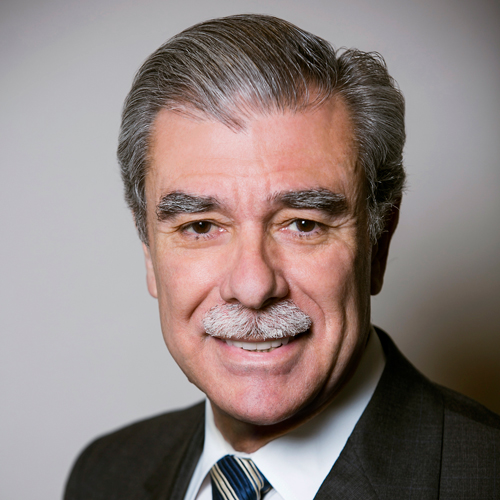What are some of the health issues concerning American Latinos in 2014?
Among Latinos, the issues that are of serious concern are commonly known: obesity and type 2 diabetes. Here in Arizona, the Native American population has exceedingly high levels of type 2 diabetes. Though health care statistics often group all Latinos together, we need to make sure people understand they are a heterogeneous group of individuals. The genetics are different across the Latino demographic. If you look at the DNA of Latinos from Puerto Rico, you’ll see they have a high percentage of African DNA, whereas Latinos from Mexico have a high percentage of Native American DNA, which makes them prone to different issues.
Since I arrived in Arizona, something particularly concerning has been the high prevalence of breast cancer in Latinas. They are much more susceptible, and often times the diagnosis is much more severe. We’ve seen a trend of Latinas developing triple negative cases, which rules out three potential therapies, making the prognosis considerably worse. It is unclear why this trend is happening, but it’s something we’re trying to sort out.
What effect does a diverse health care workforce have on these issues?
This country has staggering health care disparities, and the gap is widening. Studies clearly show that patients prefer to be cared for by health care professionals of the same ethnic background. And when they do receive that care, their outcomes are better. Confidence in your provider is a big part of wellness. Folks who are taken care of by people of the same ethnicity tend to be more compliant, take their medication more precisely, and show up for appointments.
The number of physicians we’re training who are Latino or African-American is not reflective of the increasing population of these groups in our country. I believe the Affordable Care Act is a much-needed reform, and that will have a powerful impact, but it’s creating a major demand for more health care providers. More people getting insured means introducing more people who are able to receive care to the system. The time is now to figure out how to improve the pipeline for minority students.
What do you think is the best way to get more students interested in careers in health care?
You win or lose this particular game well before college. We need to get people thinking—or hooked—on a career model well before high school. We need to get role models in front of African American and Latino students to get them interested in the careers we’re talking about. If we don’t have a diverse workforce now, the chances of inspiring individuals throughout that pipeline are much lower. It becomes a circular problem. You get students into picking a focus in science, technology, engineering, or math (STEM), attending college, but then not graduating. This happens when these students aren’t nurtured, the course load becomes too difficult, and they wind up doing something else. It’s an example of the failure of our system at the undergraduate level.
How do you nurture a student at the undergraduate level? What are the resources they need to excel?
Once students are in medical school, it’s important to have mechanisms to continue to nurture them. For example, we have the Hispanic Center of Excellence at the University of Arizona (UA) that provides mentorship and tutorial means when needed.
What are some programs you’ve implemented through the university to promote health sciences education and careers among minority students?
We have several programs here at UA. The UA College of Medicine Medical Student Research Program has expanded its reach to offer a wide variety of National Institutes of Health-supported programs for students. One program reaches high school students, teachers, and undergraduates who are financially, socially, or educationally disadvantaged and offers them opportunities to experience what a career in health care and research might look like. Among other programs that focus on disadvantaged high school juniors and seniors are the Med-Start and PharmCamp programs. The goal is to engage and provide opportunities for these young students to become physicians, pharmacists, nurses, or other health care providers.
When I was at Johns Hopkins I started a program that, every summer, brought in 30 undergraduates of African-American or Latino backgrounds. We’d pay their way to Hopkins, give them a place to stay, a stipend, and plunk them into a lab alongside a faculty member. All through the summer they received instruction on how to apply for graduate school, how to prepare a CV, and how to write a compelling essay. The program lasted for eight years, and saw spectacular students apply. Nearly 90 percent wound up in medical school, graduate school, or got scholarships. I did the same thing in Chicago and had similar results. We implemented the program at the University of Illinois, and we’re also doing it here at Arizona.
There are many opinions about how to close the STEM and achievement gaps with Latinos.
Why do you believe intervention in education is the answer?
I think all ideas are important, but in my observation, the impact of having a role model in the education paradigm is critical. I’ve focused most of my efforts on undergraduates, not because I think that’s where you win or lose, but it’s where I can be most impactful. When offered research experience and exposure to good mentorship, the undergraduate can get turned on to a particular subject in science and put on to a steep trajectory toward a medical career. The impact can be really immediate.
What challenges are you facing in Arizona with health care delivery through the university?
There is much more to providing Arizona with appropriate health care than just setting up a clinic. Within the time I led the health system at the University of Illinois in Chicago, we made a good deal of impact. We opened clinics in Englewood and Brighton Park, neighborhoods that had no health care delivery previously. We were addressing the needs of an African American community that ran a mile square. If you set up shop in Chicago, you have a very high-density population, so people will notice you’re there. In contrast, in Arizona, you can drive 50 miles and not see another soul. This is why both settings, though very different, require a large element of community engagement. You have to engage leaders, obtain buy-in and strive to understand the community, so they’re not suspicious of your motives.
Do you ever face any resistance to the services the university extends to underserved populations?
There are some cultural sensitivities that must be understood to approach health care delivery issues if you’re contemplating any type of clinical research in these areas. As a country, we don’t have a very good track record with underrepresented minorities, Native Americans particularly. Academic institutions have done particularly poorly in this area. Historically, they’ve entered a community, gathered a bunch of data, then packed up and left when their grant ran out. That’s an experiment model done many times, whether at Hopkins or Harvard, so we need to do a better job at keeping projects running. Now at UA, we’re being much more thoughtful about our methods.
Serving in a border state, have you encountered additional hurdles to providing health care to the immigrant population, such as language barriers or unfamiliarity with the medical system?
There are important social issues surrounding health care and immigration. There has to be a multilayered plan on how to make the discussions surrounding these hurdles less painful and more productive. People who come in to the country as first-generation immigrants tend to be healthier than folks who are already here. Also, major issues exist among the immigrant population around pre- and post-natal care, vaccinations, and screening. Our country has a lot of work to do in this area, but I am inspired by every kid I come in contact with who decides to go to medical school and keeps in touch. We just need to get the pipeline moving, and that’s why I’m excited about the leadership opportunities I’ve had in the past and have here and now.

